How Much Does It Cost to Run a Refrigerator: Daily, Monthly, & Yearly Expenses
ZacharyWilliamA practical guide to estimating costs, understanding what drives energy use, and cutting your bill—without compromising food safety.
1) TL;DR
Modern household refrigerators typically average ~0.8–2.0 kWh/day. At an electricity price of $0.15/kWh, that’s about $0.12–$0.30 per day, $3.60–$9.00 per month, and $43–$110 per year (your exact cost depends on model, settings, climate, and usage).
Quick self-check Look up your fridge’s annual kWh on its energy label → get your local price per kWh from your utility → apply the formula.
2) What Really Drives Refrigerator Energy Use
Rated vs. Average Power
Compressors cycle on and off, so average power is far below the nameplate wattage. The fraction of “on” time is called the duty cycle.
Major Factors
- Room temperature & humidity
- Thermostat settings (colder → more energy)
- Door opening frequency & duration
- Food load (thermal mass) & air circulation
- Frost/defrost cycles, gasket condition
- Clearance & ventilation for the condenser
Design details matter too: direct-cool vs. fan-forced (frost-free), inverter/variable-speed compressors, built-in vs. freestanding cabinetry, and add-ons like ice makers or door dispensers.

3) How to Get a Reliable Baseline
Method A — Energy Label
Find the annual energy use (e.g., 350 kWh/year). Convert to daily: 350 ÷ 365 ≈ 0.96 kWh/day. Multiply by your price per kWh for cost.
Method B — Smart Plug/Power Meter
Monitor for 7–14 days to capture normal cycles, then average. This accounts for defrost cycles, ambient temperature, and real household behavior.
Method C — Quick Estimate
Daily kWh ≈ Rated Watts × 24 × Duty Cycle ÷ 1000
Example: 120 W × 24 × 0.35 ÷ 1000 ≈ 1.01 kWh/day.
Pro Tip
Repeat measurements in summer and winter to see seasonal swing. Keep a simple log of settings, ambient temperature, and unusual usage.
4) Electricity Rates & Billing Details
- Flat rate: One price per kWh (simple multiplication).
- Time-of-Use (TOU): Peak/Off-Peak/Shoulder prices. You’ll pay more when the grid is busiest.
- Tiers & Riders: Some utilities add delivery, fuel adjustments, or taxes. Check the “All-in” $/kWh.
In this article we use USD. To convert currencies, multiply by the exchange rate or use your bill’s local price per kWh.
5) Daily, Monthly & Yearly Cost Calculator (Worked Examples)
Monthly Cost ≈ Daily Cost × 30
Yearly Cost = Annual kWh × Price (or Daily Cost × 365)
Three Typical Consumption Levels × Three Prices
Use the table to bracket your fridge. Pick the row closest to your daily kWh and the column closest to your $/kWh.
| Daily Use (kWh) | Price $0.12/kWh | Price $0.20/kWh | Price $0.35/kWh |
|---|---|---|---|
| 0.8 | $0.096/day • $2.88/mo • $35.04/yr | $0.160/day • $4.80/mo • $58.40/yr | $0.280/day • $8.40/mo • $102.20/yr |
| 1.2 | $0.144/day • $4.32/mo • $52.56/yr | $0.240/day • $7.20/mo • $87.60/yr | $0.420/day • $12.60/mo • $153.30/yr |
| 2.0 | $0.240/day • $7.20/mo • $87.60/yr | $0.400/day • $12.00/mo • $146.00/yr | $0.700/day • $21.00/mo • $255.50/yr |
Example: Energy label says 400 kWh/year and your price is $0.20/kWh
Daily energy ≈ 400 ÷ 365 = 1.10 kWh → Daily cost ≈ 1.10 × 0.20 = $0.22 → Monthly ≈ $6.60 → Yearly = 400 × 0.20 = $80.00.
6) Model Types & Typical Ranges
- Compact/Mini (under ~5 cu ft / 140 L): ~150–300 kWh/yr; efficiency varies widely.
- Top/Bottom Freezer (14–22 cu ft / 400–620 L): ~300–550 kWh/yr (often most efficient among full-size layouts).
- Side-by-Side / French Door (22–28+ cu ft / 620–790+ L): ~450–800+ kWh/yr; more features, more volume, more energy.
- Built-in / Column: Premium, larger condenser runs; check the label carefully.
- Commercial display coolers: Designed for frequent openings and lighting—expect higher usage.
Layout, insulation quality, and compressor control strategy (fixed-speed vs. inverter) drive much of the spread.
7) Seasonal & Usage Swings
Summer heat and humidity increase compressor run time. Holidays, parties, and bulk shopping can also spike usage through frequent openings and extra warm food loads. Poor ventilation (tight cabinetry, near ovens, or sun-heated walls) further raises energy.
8) Hidden Loads & Extra Features
- Automatic defrost heaters
- Ice makers and chilled water dispensers
- Door displays, lights, and connectivity modules
- “Sabbath,” “Holiday,” or “Eco” modes—use wisely for savings without risking food safety
9) How to Lower Your Cost (Actionable Checklist)
Best-Practice Settings
- Refrigerator: 37–40°F (3–4°C); Freezer: 0°F (−18°C).
- Avoid over-cooling; each degree colder costs more.
- Keep the fridge ~two-thirds full for stable temps and airflow.
Maintenance & Placement
- Vacuum condenser coils 2–4×/year.
- Leave proper rear/side/top clearance for ventilation.
- Inspect and replace worn door gaskets.
- Keep away from ovens, dishwashers, and direct sun.
Behavior & TOU Strategy
- Minimize door-open time; organize shelves for “grab-and-go.”
- Let hot food cool (safely) before loading.
- For TOU plans, schedule ice-making or “quick-cool” during off-peak if supported.
10) When Replacing Pays Back
Calculate the annual savings from a newer, efficient model and compare to the net purchase price to get a simple payback.
Payback (years) = Net Cost ÷ Annual Savings
Example: Old: 800 kWh/yr → New: 350 kWh/yr → Δ=450 kWh. At $0.20/kWh, save $90/yr. If the upgrade costs $900 net, payback ≈ 10 years.
Also consider comfort (noise/heat), storage needs, reliability, and any rebates or tax incentives when deciding.
11) Renters, Owners & Small Businesses
- Renters: Verify energy label before signing; use a smart plug to understand usage if you pay the bill.
- Owners/Landlords: Total Cost of Ownership matters—efficient models can reduce tenant complaints and service calls.
- Small Businesses: For display coolers, TOU awareness and door-management habits pay back quickly.
12) Backup & Off-Grid Scenarios
If you need to run a refrigerator during outages or off-grid, estimate runtime using battery capacity (Wh) and the fridge’s average power (W), adjusted for inverter/system efficiency.
Example: A 1200 Wh portable power station with ~85% usable energy provides ~1020 Wh. If your fridge averages 80 W, runtime ≈ 1020 ÷ 80 ≈ 12.8 hours. Actual results vary with cycling, ambient temperature, and startup surges.
For solar, daily energy ≈ Panel Watts × Effective Sun Hours × System Efficiency. “Charge-by-day, run-by-night” can extend autonomy significantly in sunny climates.
Recommended: UDPOWER S1200 Portable Power Station
1190Wh capacity · 1200W AC output — dependable backup to keep your refrigerator cold during outages.
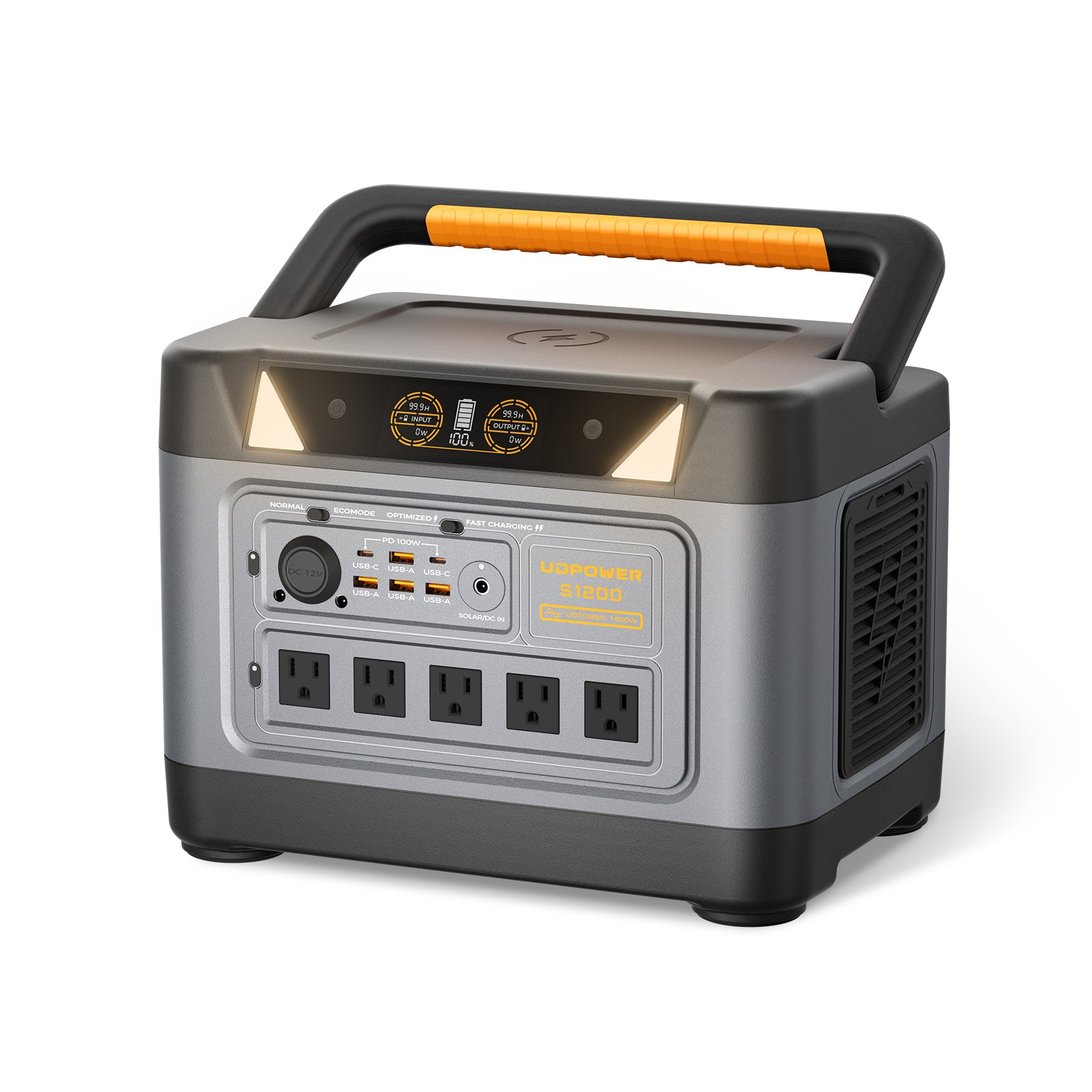
Fridge Runtime & Cost Accounting
Assumptions (typical): inverter efficiency 85%, charge efficiency 90%. Usable energy to AC load ≈ 1190Wh × 0.85 = 1011.5Wh. Grid energy per full charge ≈ 1190Wh ÷ 0.90 = 1.322kWh.
Actual results vary with model, ambient temperature, door openings, and startup surge behavior.
Estimated Runtime per Full Charge
| Average Fridge Load | Runtime (hours) |
|---|---|
| 60W (efficient full-size) | ≈ 16.9 h |
| 80W (typical full-size) | ≈ 12.6 h |
| 100W (older / fuller) | ≈ 10.1 h |
| 150W (warm room / heavy use) | ≈ 6.7 h |
Charging Cost Example (Grid Price = $0.15/kWh)
Cost per full S1200 charge ≈ $0.20. Cost per fridge hour depends on average watts:
| Average Fridge Load | Cost per Hour |
|---|---|
| 60W | ≈ $0.0118/h |
| 80W | ≈ $0.0157/h |
| 100W | ≈ $0.0196/h |
| 150W | ≈ $0.0294/h |
Tip: Ensure your refrigerator’s startup surge is within the inverter’s capability. For best efficiency, keep the fridge at 37–40°F (3–4°C), freezer at 0°F (−18°C), with good ventilation around the condenser.
13) Frequently Asked Questions
Why do energy labels show kWh per year instead of watts?
Fridge power draw isn’t constant—the compressor cycles on/off. Annual kWh summarizes standardized testing so you can estimate cost directly with kWh × price per kWh.
How do I estimate costs with tiered or Time-of-Use (TOU) rates?
Use your all-in average price (total bill ÷ total kWh). For TOU, blend by hours: Cost ≈ (kWh_peak × price_peak) + (kWh_off × price_off). A simple proxy is to multiply daily kWh by your last bill’s average $/kWh.
Does opening the door really impact energy use?
Yes. Warm, humid air enters and must be cooled again, increasing compressor run time. Minimize door-open duration, group grabs, and avoid loading hot food directly.
Are inverter (variable-speed) compressors always worth it?
Often yes. They reduce start/stop losses and hold steadier temps, improving part-load efficiency (typical savings vs. similar fixed-speed models can be noticeable, but design/insulation still matter).
What are the best temperature settings for safety and savings?
Refrigerator: 37–40°F (3–4°C). Freezer: 0°F (−18°C). Going colder than needed increases energy with little benefit.
Are mini fridges cheaper to run than full-size models?
They use less absolute energy but can be less efficient per liter. Typical compact units run ~150–300 kWh/year; check the label—design quality varies widely.
How much do ice makers and water dispensers add to my bill?
They add standby and cycle loads that accumulate across the year. If you rarely use them, disabling can save a few dollars per month depending on usage and model.
Manual-defrost vs. frost-free—what’s the energy impact?
Frost-free units use periodic heaters (slightly higher baseline) but avoid thick frost that degrades efficiency. Manual units can be efficient if you defrost before frost builds up.
Why is summer consumption higher than winter?
Higher ambient temperature and humidity increase heat gain and defrost frequency. In hot, humid climates, summer use can be noticeably higher than winter.
How accurate are smart plugs/power meters for fridges?
Good meters that record energy (kWh) over days are usually accurate enough. Inrush currents can confuse cheap instant-wattage readings—trust multi-day kWh totals.
What maintenance actually reduces energy use?
Vacuum condenser coils 2–4×/year, keep rear/side/top clearances, replace worn door gaskets, level the unit, and keep seals/hinges aligned to prevent air leaks.
How do I compute simple payback if I replace an older fridge?
Annual savings = (Old kWh − New kWh) × price → Payback (years) = Net cost ÷ annual savings. Consider comfort, capacity, reliability, and any rebates.
Can a portable power station run my refrigerator during an outage?
Yes, if it can handle startup surges and has enough usable Wh. Runtime ≈ usable Wh × efficiency ÷ average W. Example: 1200 Wh × 0.85 ÷ 80 W ≈ ~12.8 h (actual varies by cycling and ambient).
What placement mistakes raise my energy bill?
Insufficient rear/top clearance, proximity to ovens/dishwashers, direct sun exposure, and tight cabinetry that traps heat—all increase compressor run time.
How full should a fridge be for best efficiency?
Aim for roughly two-thirds full: enough thermal mass for stability but not so full that airflow is blocked. Avoid pressing items against rear air channels.
Continue Reading:
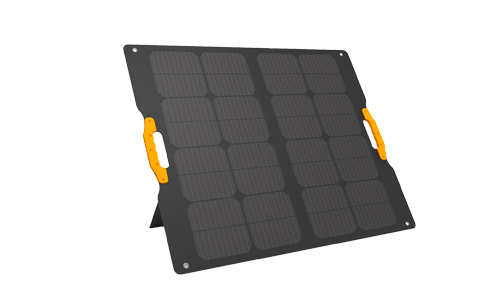
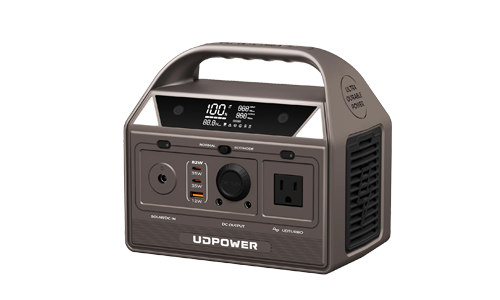
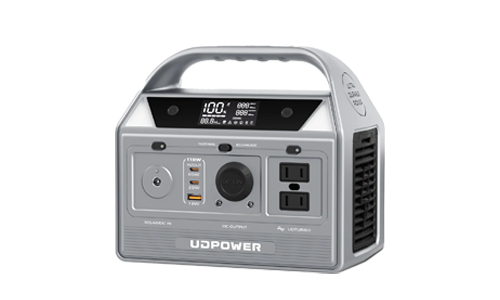
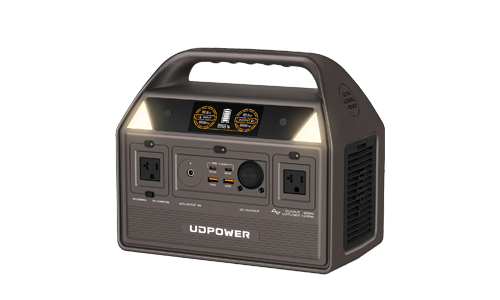
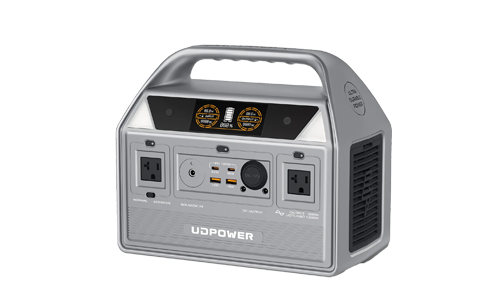


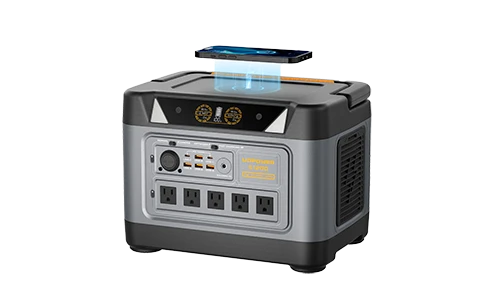
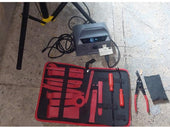
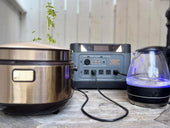
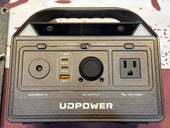
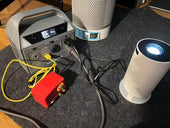
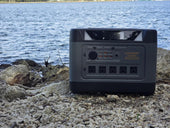
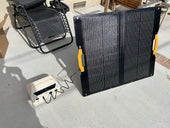
















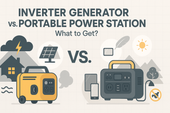
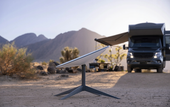



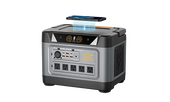







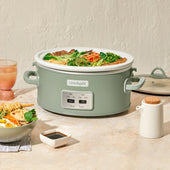






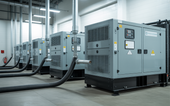
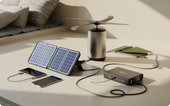
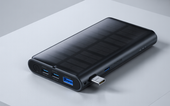
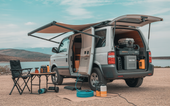

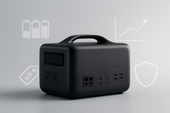







![How to Live In The Woods [Complete Guide]](http://udpwr.com/cdn/shop/articles/Off-Grid_Cabin_Option_f6c94fe7-1ae7-4c3a-baf5-ed9fe684c832.png?v=1763523215&width=170)




